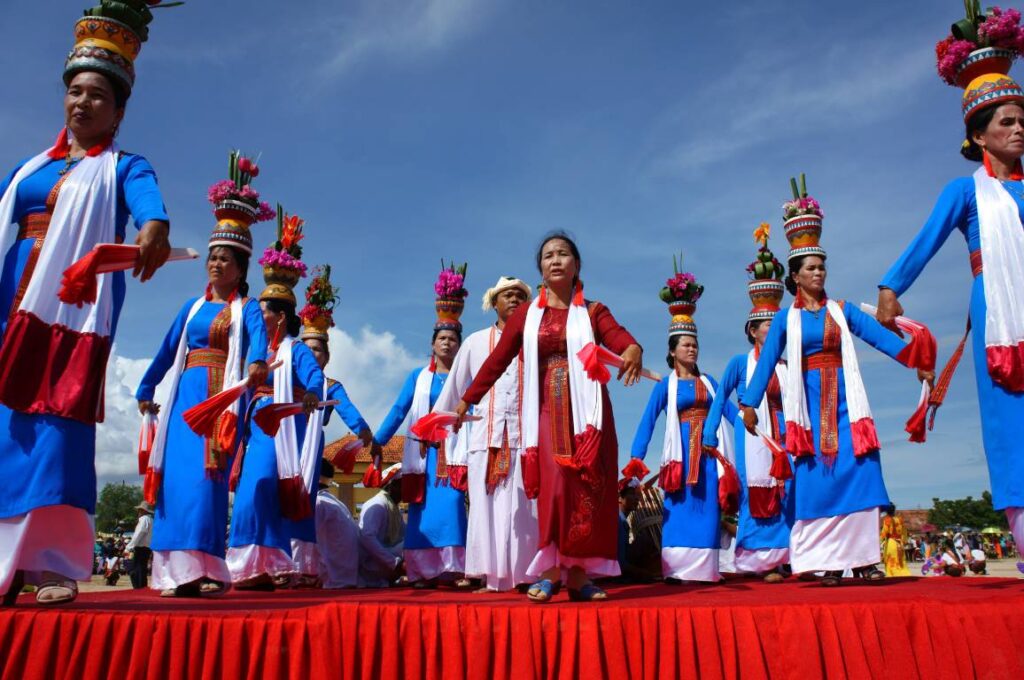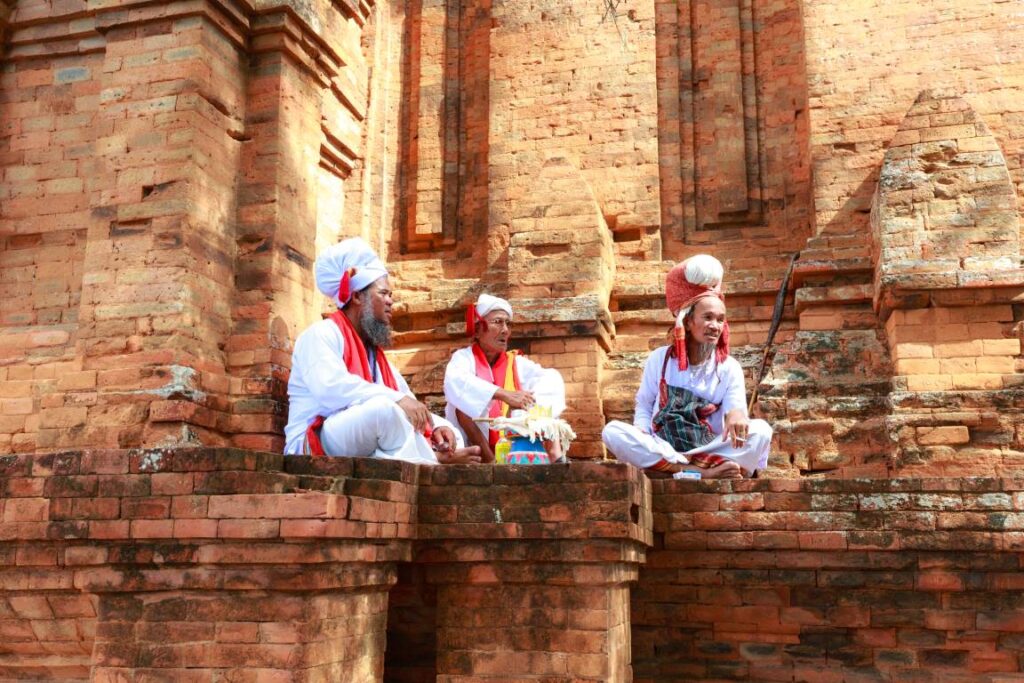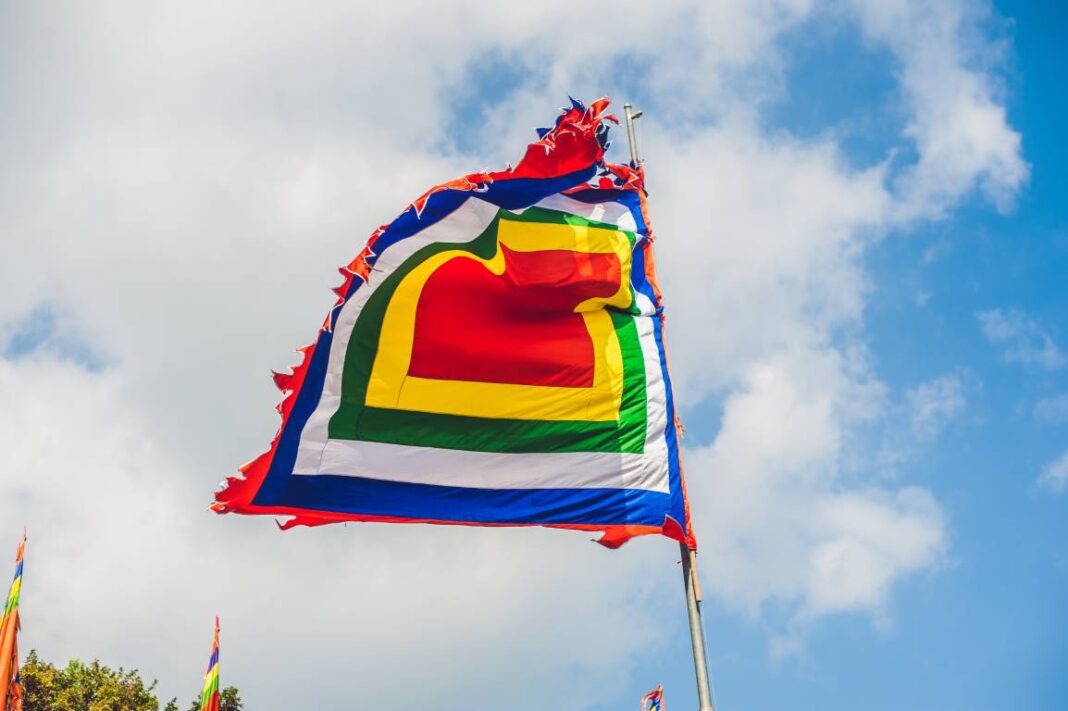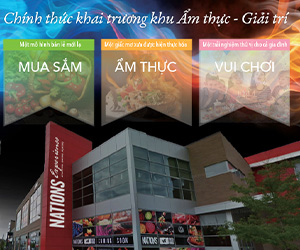Kate festival is one of the biggest festivals celebrated by the Cham people. Every year, wherever they are, they return to Ninh Thuan to gather with their families and attend the festival. Nowadays, Kate festival is held in the central provinces of Ninh Thuan and Binh Thuan, but Ninh Thuan, where most Cham people live today attracts the most attendees to this festival annually.
What is it?
The Kate festival is held for three days (from July 1 according to the Cham calendar) to give thanks to three gods Po Klaung Garai, Po Romé, and Goddess Po Nagar. It is believed they blessed the Cham people, bringing peace and prosperity. During the festival, people also honour other gods.
When calculated according to the Kinh calendar, the festival usually falls in late September or early October. In Ninh Thuan, the Kate ceremony is held at Po Nagar temple (Huu Duc village) and Po Rome tower (Hau Sanh village). Both sites are located in Phuoc Huu commune, Ninh Phuoc district, Ninh Thuan where there are many features of traditional Cham culture.
During the festival the Cham people display many unique traditions of their nation such as singing, dancing and singing. Kate is the largest of dozens of Cham festivals during the year, attracting members of all ages and walks of life.
When was Kate festival started? There is no definitive answer. However, most historical researchers believe that Kate was influenced by Indian culture. Thus, it is considered a product of the Champa kingdom in the Indianization period, before the 15th century.
Although Kate is a big festival, it is not the Cham New Year. For them, Tet takes place on the first day of the first month, falling around April according to the Kinh calendar. The Cha New Year is called Rija Nùgar or the festival of praying for rain. It is about getting rid of bad luck to receive good things at the beginning of the new year. Also, praying for rain is preparation for the new farming season.
What are the activities?

The rituals include several activities such as: the costumes welcoming ceremony, the opening of the temple’s gate, cleaning the idols, changing their costumes and finally organizing the ceremony at the village and in each household.
The festival at the temple and tower is attended by dignitaries including the priest (Po Dhia) to officiate, the teacher who plays the Kanhi monochord – one of the Cham’s instruments- also known as the ‘cò ke’ teacher, a psychic lady (Muk Payau), and a temple and tower keeper (Camuney). Offerings are one goat, three chickens, five trays of rice with goat meat, one tray of rice with sesame salt, three loaves of rice cakes and fruits.

The first day:
The costumes welcoming ceremony
According to legend, the inhabitants of the ancient Champa kingdom included many ethnic groups such as Cham, Ede, Raglai, and Churu . The Cham are considered the “oldest sister” and the Raglai are the “youngest.” The Champa kingdom is based on matriarchy. The youngest sister is the one who holds the inheritance and keeps the ancestors’ heirlooms including the clothes of the gods and kings. On the day before the main Kate festival, the Cham hold a ceremony to welcome the Raglai and transfer the clothes to the Cham temples and towers.

The first day of the main ceremony is called the costumes welcoming ceremony when the Raglai bring the clothes of the gods back to Po Nagar temple. The procession and the ceremony to welcome the clothes is solemn and there is never a shortage of unique cultural activities.
On this day, the Cham prepare a large stage with a ceremony orchestra and a dance team to play upbeat music. In particular, the three main musical instruments that make up the “soul” of Cham festivals are the Saranai trumpet, the Paranung drum and the Ghinang. These musical instruments represent people, heaven and earth in their entirety. All blend together to create a complete, full being.
Second day:
Ceremony at the temple tower (opening the tower’s gate, bathing and dressing the idols)
The second day is considered the most special of the festival. From early morning (around 6-7a.m.), the Cham prepare to start the procession of costumes from Po Nagar temple to the Po Rome tower. The group includes religious dignitaries in formal attire, who will stand at the front line. Then comes a palanquin containing clothes carried by four men in traditional festival costumes. Behind the palanquin ladies wearing the atau (bamboo baskets containing the Cham’s offerings).

The orchestra plays and walks along the way, followed by the ceremony dance groups. A few teenagers carry banners on either side behind the palanquin. Finally, some locals and tourists follow the procession.

Some Cham people or people in neighboring areas who do not join the group go directly to the Po Rome tower area and present offerings early in the morning. These might be fruits, rice, chicken, even beer and wine. They spread the mats and arrange the ceremony trays in every open space around the base of the tower.
After the procession reaches the foot of Po Rome tower, they start dancing around the tower and open the door. After entering they perform the ritual of bathing and dressing the idols. This ceremony will be presided over by religious dignitaries, the rest will pray and wish for good things.

Third day:
Ceremony at the village and family
The third day is the festival that takes place in villages and families. All family members gather together, pray at home for ancestors and gods to bless their children and grandchildren so that they can prosper and have good luck.
At the end

The Kate festival is the convergence of cultural quintessence – activities, customs, beliefs, techniques, fine arts and customs. All are expressed through sacrifices, clothes, musical instruments, hymns, poems praising prosperity, hundreds of flowers, fruits, and processions.
The Kate festival is when the Cham cultural identity ascends to the throne. It is a sacred moment for earthly people to wake up the ancient Cham towers sleeping under the dust of rising time, contributing to enrichment of the multi-cultured Vietnamese peoples.






